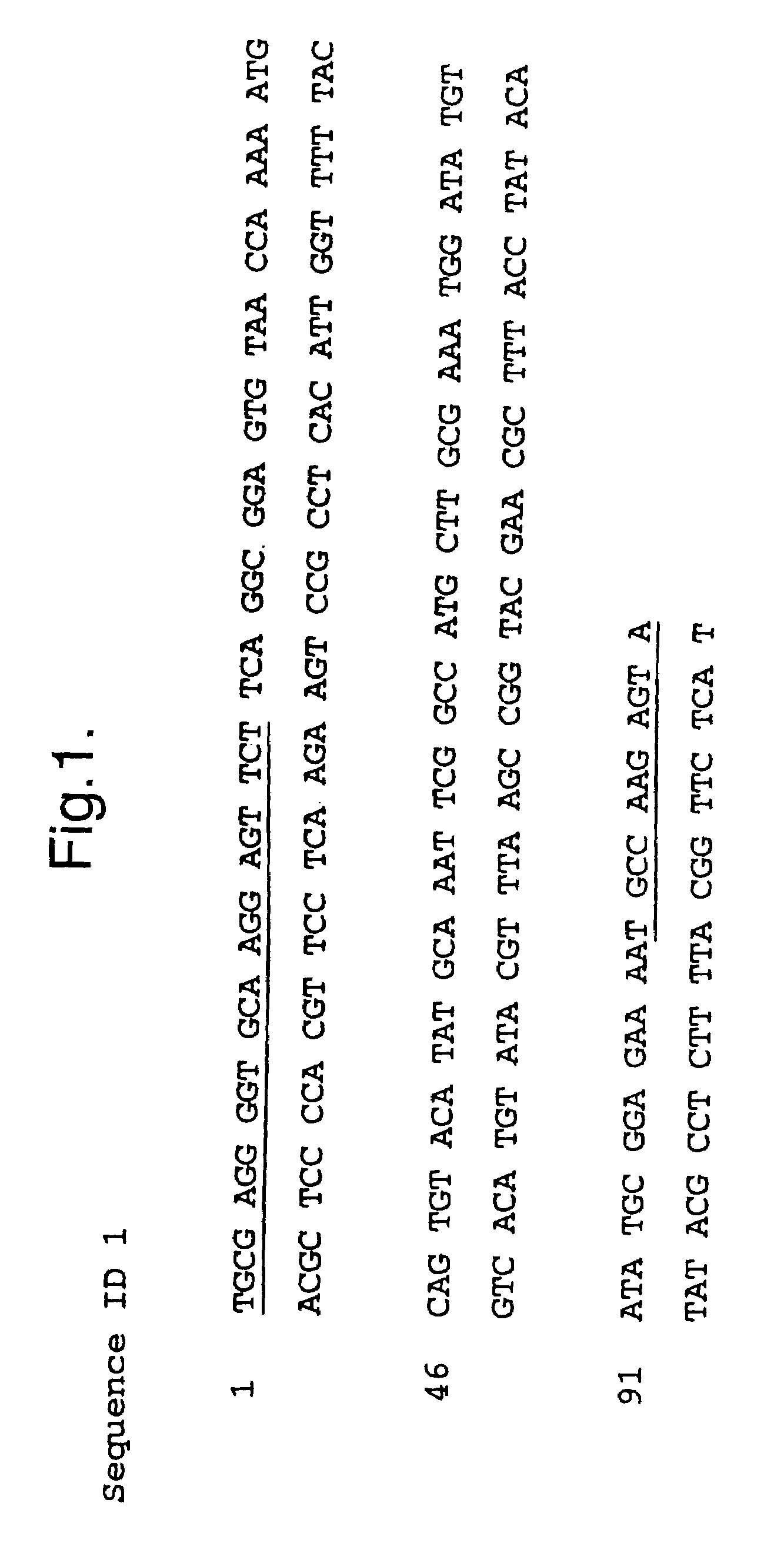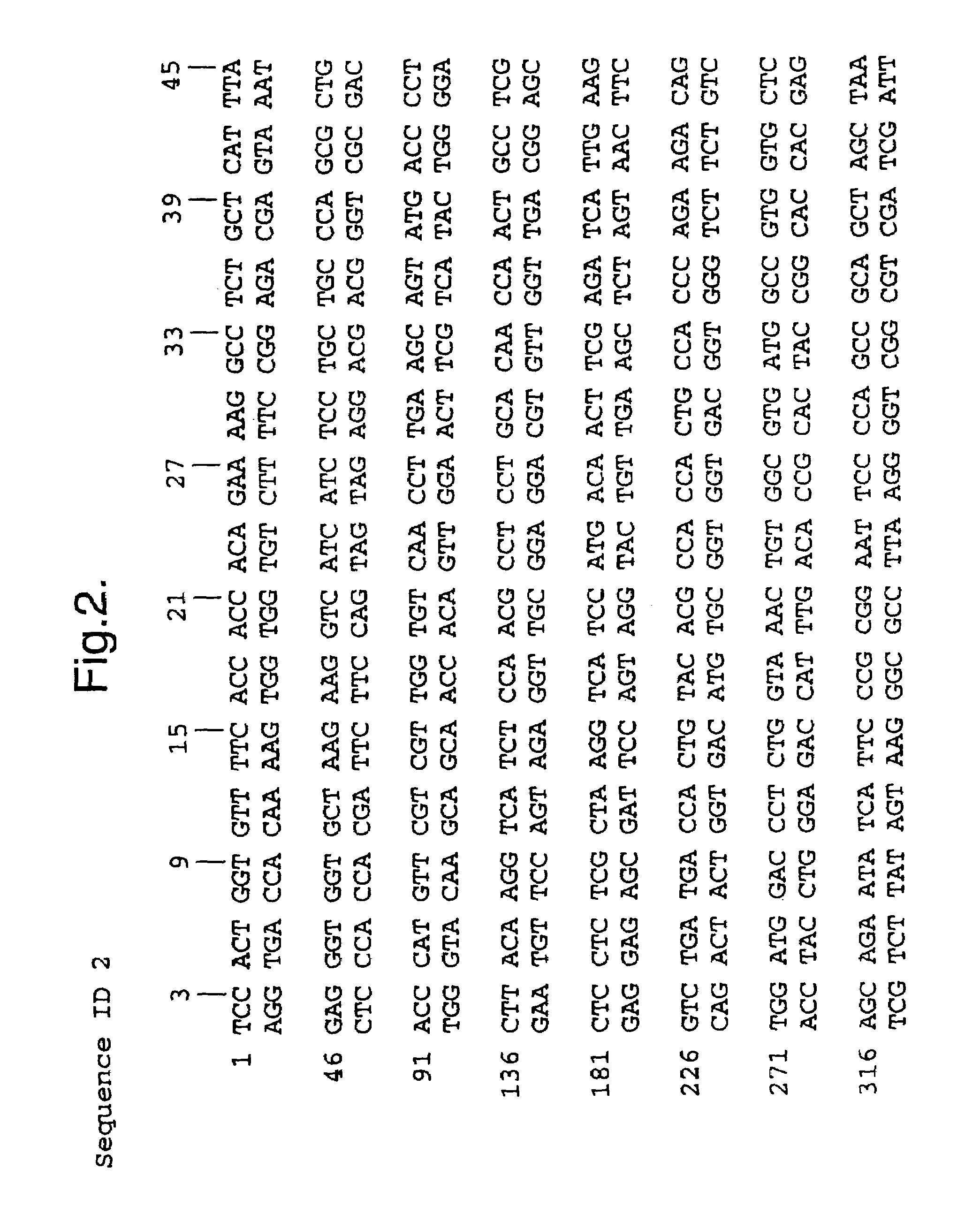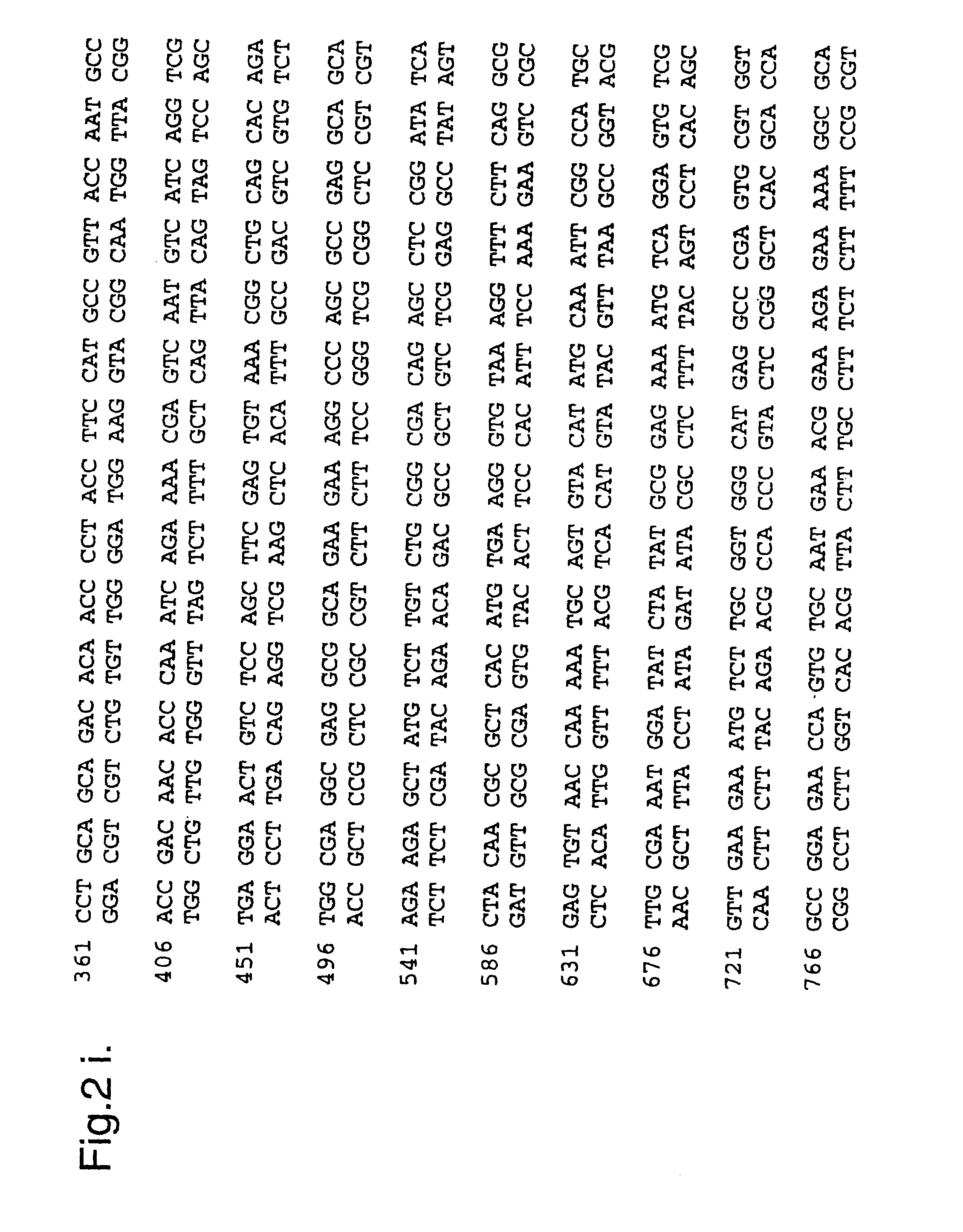Method of expressing Heliothis ecdysone receptor fusion protein
a technology of heliothis ecdysone and fusion protein, which is applied in the field of identification and characterisation of insect steroid receptors, can solve the problems of difficult and expensive steroids, and it is not feasible to use a gene switch in a mammalian cell, so as to achieve the effect of optimizing the system
- Summary
- Abstract
- Description
- Claims
- Application Information
AI Technical Summary
Benefits of technology
Problems solved by technology
Method used
Image
Examples
example i
Cloning of the Heliothis Ecdysone Receptor
A. Probe Generation
[0147]The rational behind the generation of the probe to isolate Heliothis homologues to the steroid / thyroid receptor superfamily members was based on comparing the sequences of developmentally regulated steroid / thyroid receptor superfamily members. The sequences available showed a highly conserved motif within the DNA binding domain of the RAR and THR (thyroid) receptors. The motifs were used to design degenerate oligonucleotides for PCR amplification of sequences derived from cDNA template produced from tissue expected to express developmentally regulated steroid / thyroid receptor superfamily members (i.e. larval tissues).
[0148]The sense oligonucleotide is based on the peptide sequence CEGCKGFF (SEQ ID NO: 14) which at the DNA level yields an oligonucleotide with degeneracy of 32 as shown below:
[0149]
ZnFA5′5′ TGC GAG GGI TGC AAG GAI TTC TT 3′(SEQ ID NO: 15) T A T A T
[0150]The antisense oligonucleotide ...
example ii
Expression of Heliothis Ecdysone Receptor in Mammalian Cells
[0165]To demonstrate that the cDNA encodes a functional ecdysone receptor, effector constructs were generated containing the HEcR under the control of the CMV (cytomegalovirus) promoter, and the DNA expressed in mammalian cells.
A. Effector Constructs
[0166]A first mammalian expression plasmid was constructed by placing a HindIII / NotI pSK19R fragment into the pcDNA3 HindIII / NotI vector resulting in pcDNA319R (FIG. 7).
[0167]A second effector plasmid was constructed wherein the non-coding region of the cDNA 19R was deleted and a consensus Kozak sequence introduced. The mutagenesis was carried out by PCR amplifying a DNA fragment with the oligo HecRH3C: 5′aattaagcttccaccatgccgttaccaatgccaccgaca 3′ (SEQ ID NO: 21) containing a unique HindIII restriction enzyme recognition site followed by the mammalian Kozak consensus sequence, and HecRNdeI: 5′cttcaaccgacactcctgac 3′ (SEQ ID NO: 22).
[0168]The resulting 353 bp PCR fragment was res...
example iii
Chimeric Constructs and Ligand Validation in Maize Protoplasts
[0177]In order to apply the ecdysone receptor as an inducible system it was deemed necessary to simplify the requirements of the system by avoiding the need of a heterodimer formation to obtain an active complex. The glucocorticoid receptor is known to form homodimers and chimeric constructs of the glucocorticoid receptor transactivating and DNA binding domains fused to the ecdysone receptor hinge and ligand binding domains have been shown to be active as homodimers in mammalian cells in the presence of Muristerone A (an ecdysone agonist) (Christopherson et al., 1992). However, the chimeric receptor is not responsive to 20-hydroxyecdysone (Christopherson et al., 1992).
[0178]The analysis of the activation of the glucocorticoid / Heliothis ecdysone chimeric receptor entailed the production of two other control effector constructs. The first one of the constructs contained the intact glucocorticoid receptor while the second on...
PUM
| Property | Measurement | Unit |
|---|---|---|
| temperature | aaaaa | aaaaa |
| temperature | aaaaa | aaaaa |
| pH | aaaaa | aaaaa |
Abstract
Description
Claims
Application Information
 Login to View More
Login to View More - R&D
- Intellectual Property
- Life Sciences
- Materials
- Tech Scout
- Unparalleled Data Quality
- Higher Quality Content
- 60% Fewer Hallucinations
Browse by: Latest US Patents, China's latest patents, Technical Efficacy Thesaurus, Application Domain, Technology Topic, Popular Technical Reports.
© 2025 PatSnap. All rights reserved.Legal|Privacy policy|Modern Slavery Act Transparency Statement|Sitemap|About US| Contact US: help@patsnap.com



